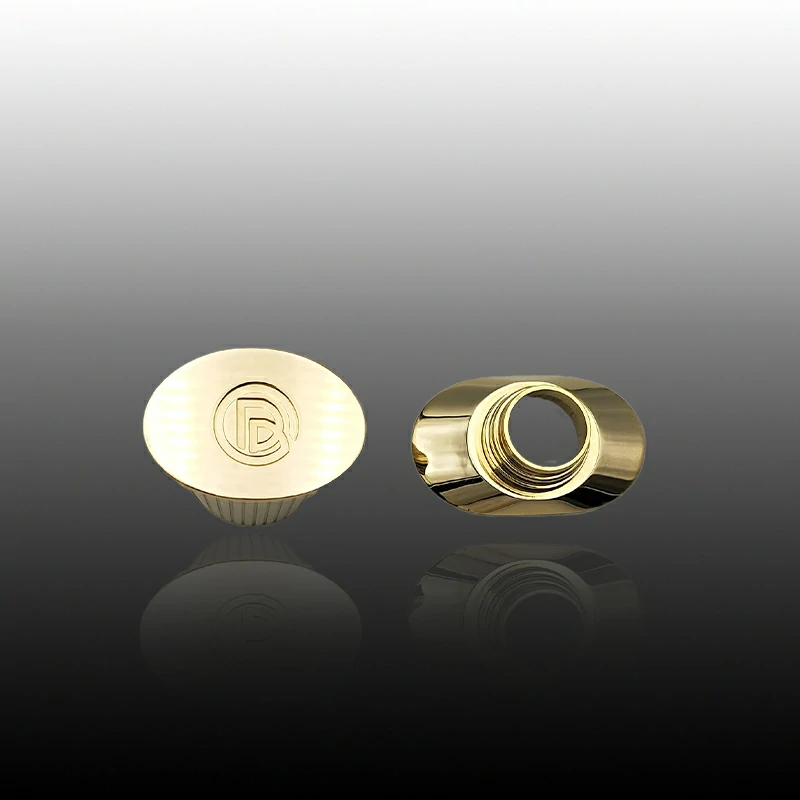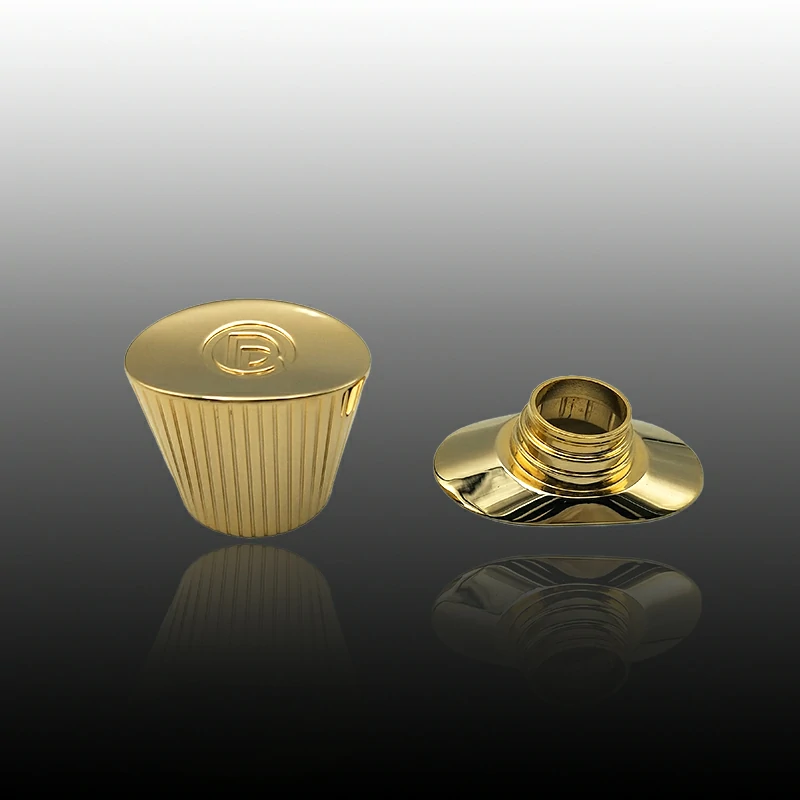Perfume bottle cap design is more than just a practical consideration; it’s an art form that taps into the subconscious of consumers. These designs aren’t arbitrary; they’re crafted with careful attention to psychological principles to evoke specific emotions and enhance the overall experience of using the fragrance. In this article, we delve into the fascinating world of perfume bottle cap design, exploring how psychological principles shape these designs for emotional impact.

Understanding the Psychology of Perfume Bottle Cap Designs
When you pick up a bottle of perfume, the first thing you notice is often the cap. Its design plays a crucial role in shaping your perception of the fragrance even before you’ve had a chance to smell it. This is where the psychology of design comes into play.
Perception and Sensory Appeal
The design of a perfume bottle cap isn’t just about aesthetics; it’s also about engaging the senses. For instance, the choice of materials, such as ZAMAC for a luxurious feel, or metal for durability, can influence how the cap feels in your hand. The texture and weight of the cap can evoke sensations of luxury or durability, shaping your perception of the fragrance within.
Emotional Triggers
Colors, shapes, and symbols used in perfume bottle cap design can evoke specific emotions in consumers. For example, a sleek and minimalist cap design may evoke feelings of sophistication and elegance, while a cap adorned with intricate patterns or embellishments may convey a sense of opulence and indulgence. By strategically incorporating these elements, designers can create caps that resonate with the desired emotional response.
Brand Identity and Storytelling
Perfume bottle caps also serve as a canvas for expressing brand identity and storytelling. The design elements used in the cap can reflect the values and personality of the brand, creating a cohesive brand experience for consumers. Whether it’s through iconic logos, symbolic motifs, or intricate detailing, each element tells a story and establishes a connection with the consumer.
Common Psychological Principles Utilized in Perfume Bottle Cap Designs
Perfume bottle cap designs draw upon several psychological principles to create captivating and emotionally resonant experiences for consumers.
Symmetry and Balance
Human beings are naturally drawn to symmetry and balance in design. Perfume bottle caps that exhibit symmetrical patterns or shapes often appeal to our aesthetic sensibilities. A well-balanced design can create a sense of harmony and order, enhancing the overall visual appeal of the fragrance packaging. Designers often use symmetrical elements to evoke feelings of stability and reliability, which can positively influence consumers’ perceptions of the fragrance.
Minimalism vs. Ornamentation
The debate between minimalism and ornamentation is central to perfume bottle cap design. Minimalist designs, characterized by simplicity and clean lines, can evoke a sense of modernity and sophistication. On the other hand, ornate caps with intricate detailing and embellishments can convey a sense of luxury and extravagance. The choice between minimalism and ornamentation depends on the brand’s aesthetic preferences and target audience. Designers must strike a balance between simplicity and complexity to create caps that resonate with consumers’ tastes and preferences.
Familiarity and Novelty
Consumers are often drawn to perfume bottle caps that strike a balance between familiarity and novelty. While familiar design elements can evoke a sense of comfort and nostalgia, novel elements can spark curiosity and intrigue. Designers may incorporate familiar motifs or symbols with a unique twist to create caps that feel both familiar and fresh. By balancing familiarity and novelty, designers can develop caps that capture consumers’ attention and leave a lasting impression.
These psychological principles provide valuable insights into the design process and help designers create perfume bottle caps that resonate with consumers on a deeper emotional level. By understanding the psychological factors at play, designers can develop caps that not only look beautiful but also evoke specific emotions and enhance the overall fragrance experience.
Case Studies: Psychological Principles in Action
To illustrate how psychological principles are applied in perfume bottle cap designs, let’s explore two case studies.
Example 1: Brand X’s Perfume Cap Redesign
Brand X, a luxury fragrance house, recently underwent a redesign of their perfume bottle caps. The new caps feature sleek lines and minimalist aesthetics, reflecting the brand’s commitment to modernity and sophistication. By utilizing symmetrical patterns and minimalist design elements, Brand X aimed to evoke feelings of elegance and refinement in consumers. The redesign was met with positive feedback from consumers, who appreciated the caps’ understated yet luxurious appearance. This case demonstrates how the principles of symmetry and minimalism can be effectively applied to perfume bottle cap design to create a cohesive brand experience.
Example 2: Incorporating Cultural Symbolism
Another example comes from a fragrance brand that sought to incorporate cultural symbolism into their bottle cap designs. By combining motifs inspired by traditional art and folklore, the brand aimed to resonate with consumers on a deeper cultural level. The caps featured intricate patterns and symbols that held significance within the target culture, creating a sense of connection and authenticity. This approach not only appealed to consumers’ aesthetic sensibilities but also allowed the brand to establish a solid emotional connection with its audience. By tapping into cultural symbolism, the brand was able to differentiate itself in a competitive market and foster a sense of belonging among consumers.
Practical Considerations for Designers and Consumers
Tips for Designers
Designers should consider the psychological principles discussed when creating perfume bottle caps. Conducting thorough research on target demographics and understanding consumer preferences is essential for creating caps that resonate with the intended audience. Additionally, designers should prioritize functionality and usability alongside aesthetics to ensure a seamless user experience.
Advice for Consumers
Consumers should pay attention to the psychological cues embedded in perfume bottle cap designs when making purchasing decisions. Consider how the design elements, such as colors, shapes, and textures, make you feel and whether they align with your personal preferences and the brand’s identity. By understanding the psychological factors at play, consumers can make more informed choices and select fragrances that evoke the desired emotions and experiences.
Conclusion
Perfume bottle cap design is a nuanced process that draws upon various psychological principles to create emotionally resonant experiences for consumers. By understanding the role of perception, emotional triggers, and brand identity in design, designers can develop caps that captivate and engage consumers on a deeper level. Similarly, consumers can leverage their understanding of these principles to make more informed purchasing decisions and select fragrances that align with their preferences and values. As the fragrance industry continues to evolve, the importance of psychology in bottle cap design will only continue to grow, shaping the way we perceive and interact with fragrances in the future.

